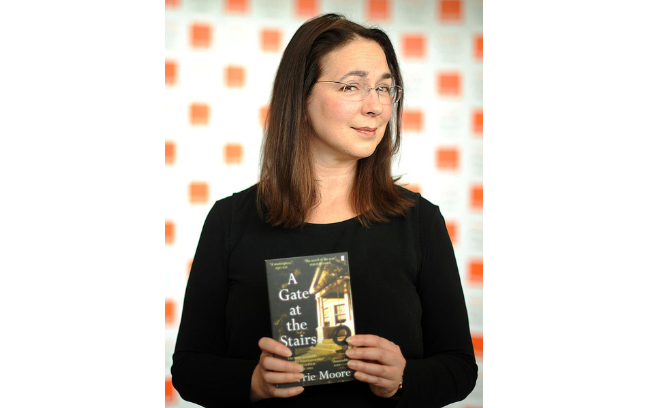Very few of us could evade accusations of pretension if we quoted Faulkner in everyday conversation. The characters conjured up in Lorrie Moore’s fiction are granted an exception, though not always solely by virtue of their earnestness. In her novel I Am Homeless If This Is Not My Home, which traces a journey toward a final burial in the American South, allusion to As I Lay Dying is particularly apt.
Moore has made a name for herself as one of America’s masters of the short story, with her inimitable style on display ever since her first work of fiction, “Raspberries,” was published in 1977. In this, her first novel for fourteen years, she once again wields her wordplay playfully and powerfully, striking a balance between levity and gravity. Such a pliant voice is needed to undertake an exploration of the thin veil between life and death, and between tragedy and comedy, and Moore once again succeeds admirably.
I Am Homeless follows Finn, a schoolteacher recently suspended over his penchant for teaching children about presidential assassination conspiracy theories, as he faces the deaths of two loved ones. His brother Max is dying of cancer while his ex Lily, who dresses as a clown to perform “laugh therapy,” is intent on killing herself, even trying once to strangle herself with the laces of her clown shoes. When Finn receives an urgent message from Sigrid, Lily’s friend and his headmaster’s wife (whose spurned advances, Finn claims, contributed to his suspension), he leaves Max in hospice in New York City and heads home to Illinois.
In “the land of sweet Lincoln” — Finn has a soft spot for the sixteenth president — Sigrid tells him that Lily has finally committed suicide. Visiting the green cemetery where she was hastily interred, Finn finds his beloved “bag of bones” standing and smiling in her burial shroud, apparently alive — or at least not “deeply dead.” They then set off on a journey to Knoxville, Lily’s final wish being to donate herself to a body farm there.
“For an event to be real it has to have that strange imperfection and contradiction that gives it reality,” Finn had told Max, before delving into his skepticism of the official narrative of Lincoln’s assassination. Clean-cut narratives which make history coherent lack the messiness and muck that make life feel, well, lifelike. Moore herself tries out Finn’s thesis — not only through the muddiness of Lily’s vital state, but also through the novel’s structuring.
A series of letters interrupt the main narrative. Written by Eliza, a boarding-house owner, to her dead sister after the Civil War, their relation to the present-day plot initially seems tenuous. But when Finn and Lily end up at Eliza’s inn on their journey, this spatial coincidence illuminates Moore’s choice to alternate between past and present: it reflects a sense the past continues to inflect upon the living present, through memory or something more supernatural. In the letters Finn finds hidden in their rented room, Eliza reports local rumors of the dead returning, or living people suddenly turning up dead: “The afterlife overlays life in places like this because people have difficulty choosing between them.”
When Finn bathes Lily at the inn, that layer of death becomes apparent. He rubs her hand a little too hard, slipping some of her skin off like a glove. The moment is tender and comic — also gruesome, but in such a way that, when your heart lurches to your stomach, the queasiness could easily be mistaken for heartache for the ill-fated couple. “My mother is a fish,” Lily says, quoting Faulkner. Then, with mirth: “I suppose by now I have violated the three-day fish rule.”
In Lily, a sweetly sarcastic and still-warm cadaver, we find Lorrie Moore’s unique sensibility made flesh. For Moore, tragedy and comedy are entwined, especially when it comes to love. “Overheard, or recorded, all marital conversation sounds as if someone must be joking, though usually no one is,” she wrote in “People Like That Are the Only People Here.” “Everything’s a joke with you,” says one character to his girlfriend in “The Jewish Hunter” — “Nothing’s a joke with me,” she responds. “It just all comes out like one.”
Death demands levity for both the dying and the grieving. Driving to Max’s hospice before his trip to the Midwest early on, Finn mulls over anecdotes that might be suitable for the situation: stories funny enough to convey the madness of the world and ease the goodbye, but not so funny that the dying wants an encore.
In I Am Homeless, stories — jokes included — can fold time over itself, bridge the space between life and afterlife or even resurrect the dead. The one Max told Finn about his first “successful” act of masturbation (“I thought perhaps you meant getting your actual fantasy girl to materialize in the room”) is enough to send the bardo’s revolving door spinning — at Max’s funeral, his colleagues speak of their admiration for him, and Finn reflects on this memory and others from their brotherhood. The stories conjure Max’s presence, and from the negative space there seems to emerge his “silhouette of living light, to keep everyone company.”
Despite its journey through rural America, it wouldn’t be fair to call this novel “Faulknerian,” or even an odyssey, though it sits beside As I Lay Dying and Homer’s epic on the slanting “slippery slope” of dying. It occupies that same transition-space between life and death, which, though none of us knows for sure, seems to entail heroic undertakings and final quests to settle debts. The influences are clear, but it’s hard to find writers ancient or modern who have used language with a music, wit and tenderness comparable to Moore’s.
This article was originally published in The Spectator’s July 2023 World edition.


















